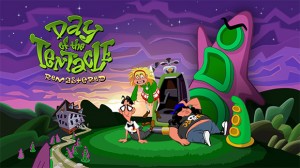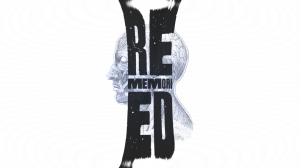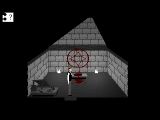Review for Day of the Tentacle Remastered

For many adventure gamers, Day of the Tentacle needs no introduction. Originally released in 1993, the very loose sequel to Maniac Mansion sprang from the early LucasArts roster of talented artists, composers and writers, co-led by Dave Grossman and Tim Schafer, both of whom went on to make large contributions to the gaming industry. DOTT’s zany characters, elaborate time travel puzzles, sharp writing, and vivid graphics became the stuff of legend. Yet, although widely regarded as one of the best adventures ever made (including sixth place in AG’s own Top 100 All-Time Adventure Games), over the years it became increasingly difficult to find a copy and get it to run on newer PCs.
This lack of accessibility to non-tech-savants was recently remedied, however, when Double Fine Productions (headed by Schafer) gathered up the original design documents, concept art, voice-overs, and music files. Dipping into the abundant source material, Double Fine has refurbished the game, updating the graphics and animations, remastering the music and sound effects, and redoing the interface to provide multiple user options. This includes the ability to play DOTT in its original form for those wanting a blast from the past. For others who prefer the latest and greatest, the remastered version blends slick cartoon animation with outlandish charm, proving that a game designed more than twenty years ago can still provide an exhilarating breath of fresh air.
Though I played Maniac Mansion way back when, I didn’t get around to Day of the Tentacle until now, so I came into the updated remake with no preconceived notions beyond the game’s enduring reputation. Two decades after the fact, it didn’t take long for me to see what all the fuss was about. DOTT features one returning player character from its predecessor (Bernard the geek) and takes place (more or less) once again in the mansion inhabited by the screwball Edison family. In addition to Dr. Fred Edison and his wife and son, other occupants still at the house include Dead Cousin Ted, an eager-to-please hamster, and two sentient tentacles. The latter are the creation of Dr. Fred. I don’t remember why the tentacles were spawned, and I’m pretty sure I don’t want to.
As Day of the Tentacle opens, Green Tentacle and Purple Tentacle hop over to a stream of toxic waste gushing from the basement of the Edisons’ home. Despite the warning sign, Purple Tentacle decides to imbibe. This results in a bizarre series of transformations which leaves Purple with dinky arms and a desire to take over the world. Soon Dr. Fred, in an unexpected fit of sanity, captures the tentacles. Green Tentacle sends out an SOS to Bernard, who is now living with two roommates – the languid Hoagie and the frizzle-frazzled Laverne. The three friends hop in a pickup truck and dash to the rescue. Unfortunately, they succeed in liberating both tentacles, and Purple hops off into the darkness to pursue his dastardly plot. Throughout the game, newspaper articles flash across the screen, charting his brilliantly unlikely path to world domination.
Realizing his mistake, Bernard consults Dr. Fred, who comes up with a solution. He will send Bernard, Hoagie, and Laverne back to the previous day, at which point they can prevent Purple from drinking the toxic waste. The three friends allow themselves to be shut into individual Chron-o-Johns (time travel Port-o-Potties). The time machine hiccups, of course, sending Hoagie 200 years into the past, Laverne 200 years into the future, and returning Bernard to the present. This is where gameplay really begins, with each friend in a different century, wandering about the historically-associated versions of the mansion and grounds.
Day of the Tentacle contains an embarrassment of riches, but what I particularly enjoyed were the outrageous, cartoon-like characters. Bernard is pleasantly nerdy and a touch naïve. He wears Groucho Marx-style glasses and his ears are enormous; the back of his head reminds me of a flapping bird. Pre-med student Laverne looks like she sticks her finger in electrical sockets. She has wild blonde hair, one eye that’s larger than the other, and blinks constantly. Instead of walking, she lurches from side-to-side. Hoagie is a mellow traveling-band roadie with a gigantic nose and sensuous lips. His long hair covers his eyes – the only glimpse I caught of one eye was when Bernard’s foot happened to be in his face. He keeps his hands in his pockets, wears a baseball cap backwards, and speaks pop-slang in a drawling voice.
All voice-overs are from the original game, including Richard Sanders of WKRP in Cincinnati fame who voices Bernard, plus Nick Jameson and Denny Delk, both of whom went on to shine in multiple roles in later video games. The actors nail these wacky, over-the-top personalities. Vocal quality is more nuanced than in the original, since the audio compression techniques used in 1993 are no longer necessary. The game has reams of clever dialog, absurd one-liners, and conversational quirks that define each of the major characters. Much of the talk is optional, and you can click through the dialogs if you choose, but it’s worth a bit of patience at particular points to hear it all. For instance, I recommend listening to Hoagie’s ideas for the American flag design, plus taking a minute to talk at length with futuristic Dead Cousin Ted, and snooping in on the IRS while they discuss baseball.
Although DOTT contains a sprinkling of dialog puzzles, the main challenges lie in finding, using, combining and getting inventory items into the correct epoch via the Chron-o-Johns. You can switch between playing Bernard, Laverne and Hoagie pretty much at will. The use of three different player characters in separate eras forces you to think, not just outside-the-box, but with a tri-part perspective and fourth dimensionality. Time travel introduces you to unsuspecting dupes like Ben Franklin the kite guy, George Washington the ax guy, and Betsy Ross the needled gal. These and many other characters – not to mention the hamster – will have to be robbed, tricked, humiliated, baited, or treated like bowling pins. In addition to shaking up the people, you can mess with the materials at hand so that the mansion and furnishings are revamped to be exploited at later dates, as impacting the current time necessarily affects the future.
A mere handful of puzzle solutions seemed obvious to me. Occasionally sensible actions were rejected as not funny enough. (Um, alright.) Many gave me that “aha!” moment after I gadded about and finally figured out what object (or its modification) was applicable when and where. I often tried every inventory item on every hotspot in every era, so I heard a lot of flushing as I passed things through the Chron-o-Johns. Certain answers were so “out there” that I needed recourse to outside help (it’s definitely the only way I could ever have won the beauty contest). There’s an early scenario involving false teeth that was so ridiculous that I tried hard not to laugh. Okay, I chuckled at many of the solutions, and frankly, for a puzzle-solve to actually spark laughter rises to “above and beyond the call of duty” heights. Still, a couple of the convoluted puzzle scenarios are a stretch, even for a whimsical, risible, sci-fi romp.
Since finding the right item and using it in the correct time and place means searching gardens, tinkering in basements, yapping in bedrooms, zooming up chimneys, and puttering in attics, it’s a good thing that the locales are so eye-catching. The original pixel art graphics have been redone in high resolution, leaving the artistic style, colors and shapes virtually the same. However, if you enjoy a bigger dose of Golden Era nostalgia, you can easily switch back-and-forth between the originals and updated environments. Each scene is stylized and full of unusual angles and contours. Shadows are emphasized, and the foreground contains silhouetted objects that frame the view. Floors are jazzily patterned, stained, and hued. Bizarre objects clutter the rooms. You’ll see Star Wars paraphernalia, non-trendy gadgets, topiary with antlers, a sock resting on a ceiling fan, and a lava lamp, to name just a few of the unusual sights.
Animations spiff up the place even further: gaudy lights flicker, green slime drips, fake barf trembles, and papers shuffle. Extensive, well-animated cutscenes are woven in and out of the gameplay to dramatize, reveal unintended impacts, and provide sight gags. Despite its megalomaniacal premise, this game does not have dark, violent themes that would make it inappropriate for young innocents. Just be forewarned that the protagonists are anything but well-mannered role models. If you are playing with youngsters, keep the player characters moving. Because if you don’t, Laverne bites her fingernails and digs for earwax, Bernard scratches himself, and Hoagie belches, spewing green spittle everywhere. The kids will love it.
The music is unusually varied and reminiscent of Looney Tunes instrumental backgrounds. You will hear brief riffs on classical music and American folk tunes. Original pieces in the three time periods include a minuet and fife and drums from Hoagie’s era, frenetic carnival tunes and whistles in Bernard’s, plus disco and gameshow music in Laverne’s. Ambient sounds garnish the atmosphere with the squeak of a mattress, the “Ha” of Oozo the Clown, the thud of a head meeting wood, and the smoosh of a tentacle’s leap.
The game is played from a third-person perspective and features a point-and-click interface, though you can use a controller if you prefer. Along with choosing between remastered or original graphics and music, an additional option allows you to dispense with the classic SCUMM-style interface altogether, using a context-sensitive icon dial that pops up when you right-click on hotspots. On the other hand, if you prefer the old “pick up, look at, talk to” verbs in a bar along the bottom of the screen, you can elect to keep it. I frequently switched between the graphics settings and tried out the control schemes before finally deciding on the more modern remastered settings.
DOTT Remastered comes with the opportunity (selected before the game begins) to hear commentary from the original development team, with remarks and reminiscences from Tim Schafer, Dave Grossman, Peter Chan, Larry Ahern, Clint Bajakian, and Peter McConnell. As the game begins, the commentary appears automatically. Later, you are alerted to its availability with text prompts. The conversation touches on inspirations for the music and art, as well as other concerns like technical constraints and the need to engage a wide variety of players, such as gamers who favor long dialog trees versus puzzle-mavens who’d skip it all if they could. The technical issues were an intriguing contrast to other kinds of design freedoms afforded the team. There wasn’t a ratings system yet, for instance, and the game pretty much thumbs its nose at political correctness. There is a kind of insane unrestraint about the story and puzzles, as though the weight of tradition, tender sensibilities and conventional thinking weren’t even considerations.
I spent thirteen hours attempting to thwart Purple Tentacle’s foul ambitions in the past, present, and future. (Not counting the special bonus for conscientious clickers, as the original Maniac Mansion can be played in its pure, old-school form on an in-mansion monitor.) I relished nearly every crazy minute, including the outrageous ending. It’s a colorful, surprising, delightful world to explore, with topnotch writing and voice-overs, puzzles that are multi-layered and thought-provoking, and characters that are going to stick with me for a long time. In bringing this classic adventure to contemporary audiences, Double Fine has given us an artful flashback to an entrancing past. Having missed it the first time around, now I’m glad I waited, as Day of the Tentacle Remastered has outstripped my expectations, amused me, outsmarted me, and radically made my day.
WHERE CAN I DOWNLOAD Day of the Tentacle Remastered
Day of the Tentacle Remastered is available at:
- GOG -75%
- Itch.io -75%
- HumbleBundle




























